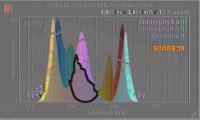https://www.ukaps.org/forum/threads/modding-the-chihiros-a-series-to-include-rgb-led.55743/page-2
Should have read this b4 all my comments.. You've been down this road before..
couple of comments for the above photos..
The "muddy" one was running the 3000k diodes as you can see. Really cheap. Basically all yellow phosphor.
Last one is labelled 6500k so I assume just those diodes were on. It's sort of surprising since normally it won't look THAT white.
Doesn't look like any of the other colors were on.
Should have read this b4 all my comments.. You've been down this road before..
couple of comments for the above photos..
The "muddy" one was running the 3000k diodes as you can see. Really cheap. Basically all yellow phosphor.
Last one is labelled 6500k so I assume just those diodes were on. It's sort of surprising since normally it won't look THAT white.
Doesn't look like any of the other colors were on.








